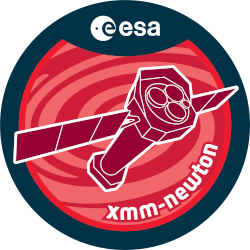

| Proposal ID | 094208 |
| Title | Photoevaporation from small planets orbiting young, active stars (III) |
| Download Data Associated to the proposal | https://nxsa.esac.esa.int/nxsa-sl/servlet/data-action-aio?obsno=0942080201 |
| DOI | https://doi.org/10.57780/esa-rk1hcnx |
| Principal Investigator, PI | Mr Michael Zhang |
| Abstract | Our observations have detected, for the first time, escaping atmospheres aroundmultiple young mini-Neptunes. Mass loss from mini-Neptunes shapes exoplanetdemographics, but the X-ray and extreme UV spectrum of the star is necessary foroutflow models. EUV cannot be measured due to ISM absorption, and must beinferred from the X-ray spectrum. We propose a continuation of our survey fromAO-20/21, measuring the X-ray spectra of four new young mini-Neptune hosts thathave or will have escaping helium measurements. This would double the sample ofyoung mini Neptunes with both helium and X-ray observations. The data will beimportant to modelling the outflow rate and temperature, which reveal the natureof the outflow (photoevaporative vs. core-powered) and the fate of these planets. |
| Publications | No publications found for current proposal! |
| Instrument | EMOS1, EMOS2, EPN, OM, RGS1, RGS2 |
| Temporal Coverage | 2024-05-03T03:18:17Z/2024-05-03T08:13:17Z |
| Version | 21.23_20231215_1101 |
| Mission Description | The European Space Agencys (ESA) X-ray Multi-Mirror Mission (XMM-Newton) was launched by an Ariane 504 on December 10th 1999. XMM-Newton is ESAs second cornerstone of the Horizon 2000 Science Programme. It carries 3 high throughput X-ray telescopes with an unprecedented effective area, and an optical monitor, the first flown on a X-ray observatory. The large collecting area and ability to make long uninterrupted exposures provide highly sensitive observations. Since Earths atmosphere blocks out all X-rays, only a telescope in space can detect and study celestial X-ray sources. The XMM-Newton mission is helping scientists to solve a number of cosmic mysteries, ranging from the enigmatic black holes to the origins of the Universe itself. Observing time on XMM-Newton is being made available to the scientific community, applying for observational periods on a competitive basis. |
| Creator Contact | https://www.cosmos.esa.int/web/xmm-newton/xmm-newton-helpdesk |
| Date Published | 2025-05-14T00:00:00Z |
| Last Update | 2025-08-04 |
| Keywords | XMM-Newton, OM, RGS, EPIC, X-ray, Multi-Mirror, SAS |
| Publisher And Registrant | European Space Agency |
| Credit Guidelines | European Space Agency, Mr Michael Zhang, 2025, 'Photoevaporation from small planets orbiting young, active stars (III)', 21.23_20231215_1101, European Space Agency, https://doi.org/10.57780/esa-rk1hcnx |